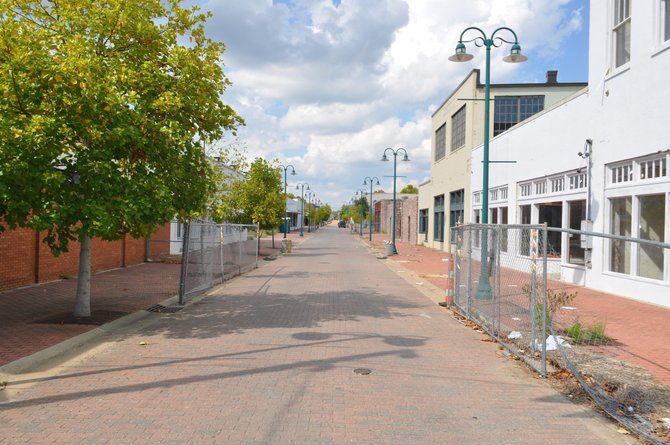It’s amazing what you can discover when you expand your sense of neighborhood. Photo by Trip Burns.
I often find myself humming "Who are the people in your neighborhood?," that song from "Sesame Street," as I move about downtown—where I live, work and play. "They're the people that you meet/when you're walking down the street/They're the people that you meet each day," the lyrics say. It makes me think of my home because from the residents to Elvis the Downtown Ambassador to JPD Officer Harper to David at Metro Shoe repair, to Frank at the bar at Underground 119, we all know each other and appreciate the stories and contributions that each person who's a part of the neighborhood "family" brings.
I know there is more to the neighborhood in terms of people and places than my narrow experience. Recently, I had an opportunity to explore things that I had no idea existed, yet were right down the block from me.
As a parishioner at St. Andrew's Episcopal Cathedral, I decided to participate in a mapping exercise of the Farish Street Historic District that a collective of organizations called Working Together Downtown was undertaking. The group is a subset of a larger collective, Working Together Jackson, that's made up of 34 member organizations divided up by neighborhood. Each smaller neighborhood group will work together to identify issues and then empower the members to work together to address them in real, meaningful ways that no single group could achieve alone. The Working Together Downtown group includes the Cathedral, several Farish Street churches—Mt. Helm Baptist Church, Central United Methodist and Farish Street Baptist—Galloway United Methodist Church and the Farish Street-Main Street project, among others.
The group determined that it wanted to start its efforts in the Farish Street Historic District and, as a first step, gathered for a day-long session to discuss historical barriers, opportunities and assets, goals and visions—and to map out the neighborhood by walking the streets.
As the youngest person in the room, I listened intently as several of the older members of historic Farish Street churches talked about the area's past, its decline, and with hope, what they saw for its future. We talked honestly about barriers—social, political and others—facing progress. Some seemed frustrated by years of starts and stops, but others remained passionate believers, and all were willing to do their part.
Then we got outside and broke into groups of five or six. We divided the neighborhood into quadrants; each group would explore those blocks and report back on property conditions and who and what we saw. My group was assigned the northwest section of the district. While I'm familiar with the area of Farish Street itself that includes F. Jones Corner, Peaches and the Alamo Theater, I'm not as familiar with the rest of the district, so the exploration was an eye-opener.
We saw countless dilapidated properties, but also signs of hope—right next to one of the worst houses, several young men were outside doing yard work at a well-kept home. We saw several community gardens and identified parcels that could accommodate more. We identified possible locations for businesses such as grocery stores or markets. And we came across a whole block of formerly dilapidated houses that have been reclaimed and rehabilitated. They are painted bright, cheerful colors, and are homes to residents who are reaching out to be community builders.
As each break-out group reported back on what it found, the collective agreed on some starting points and next steps. I left excited about what this group can do through grassroots efforts and empowering community members. ... But I also left with a widened view of what constitutes my neighborhood and how it fits into the city in a larger sense.
I came away with a greater sense of who I can work with and on what issues to improve the city. I think I'll be more emboldened in what I feel I can do within my own little piece of the city, and in thinking of other areas of Jackson, too, and what I can do there. Now when I hum that song, I'll think about the whole city as my neighborhood and make more of an effort to explore all of its facets and people.


